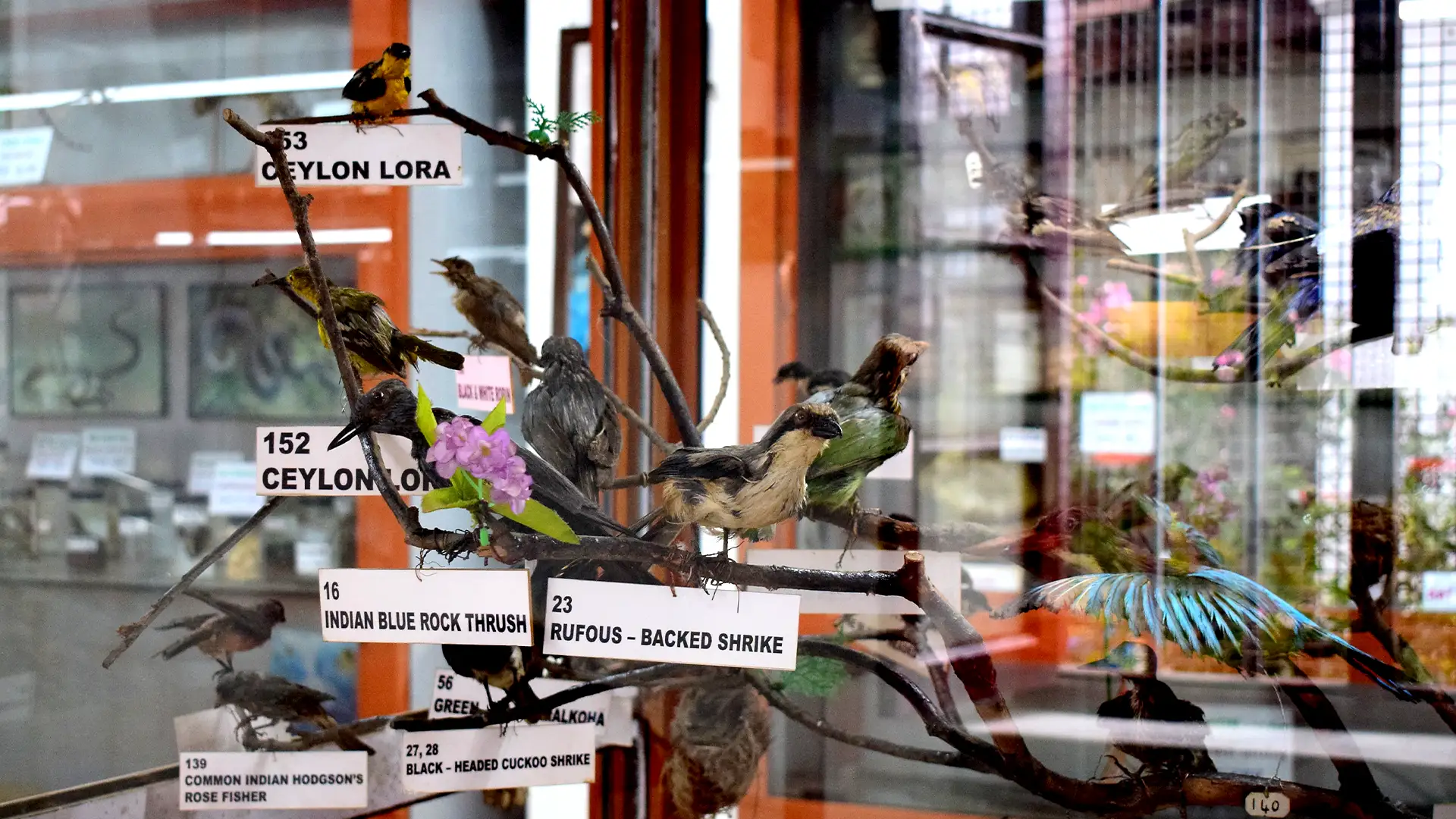
The Shembaganur Museum of Natural History has separate sections for anthropology, flora, fauna and handicrafts. Plant lovers should not miss visiting the herbarium in the museum as it has a huge garden with around 2500 species of plants. The orchidarium has 300 varieties of flower plants and trees. The taxidermy of more than 500 species of animals, birds, butterflies and insects will be a source of delight to the tourists. The museum, established in 1895, was redesigned to the present status by the Spanish priest, Father E. Ugarthe. He took charge of the museum in 1951.
Some of the butterfly species from Palani hills like Oakleaf, Common map, Yellow minos and 200 other varieties are found here. There is a collection of birds’ eggs and exhibits of local birds like the red-whiskered bulbul and the Travancore laughing thrush. You can also see skins of animals hanging onto the walls, their skeletons and feathers of birds. Snakes which were hit by cars are brought and preserved here in a jar of alcohol. There are also artefacts in connection with the Paliyar tribes here. Along with coins and archaeological treasures, there is a wonderful display of the various stages of a human foetus inside the womb.
At present, the museum is maintained by the Theological Seminary of Sacred Heart College. There are also papier-mache assistance maps of the Palani range and information on the geological characteristics, natural formations and economic growth of Kodaikanal and surrounding areas.
The museum is open from 10.00 am to 11.30 am and from 3.00 pm to 5.00 pm on all days, except Tuesdays. The entry fee is Rs 2 per person.
Kodaikanal Bus stand, about 4 km away.
Madurai International Airport, 128 km away.
Palani Railway Station, about 61 km away.
Kodaikanal enjoys a cool and pleasant climate round the year. However, the best time to visit the hill station is from April to June when the weather is at its best.